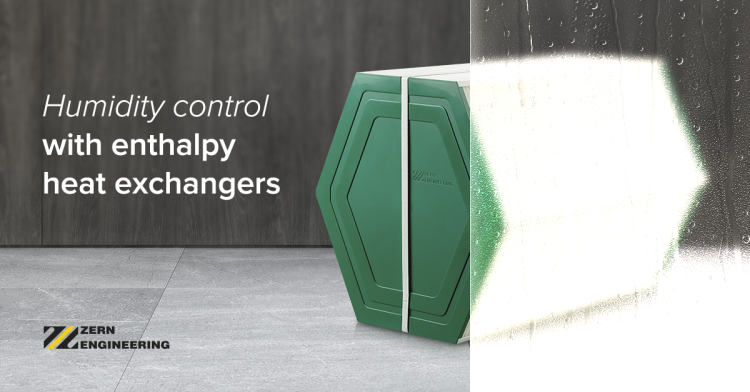| Humidity control with enthalpy heat exchangers – smart, hygienic approach to indoor air quality |

In modern ventilation, managing humidity is just as critical as controlling temperature. That’s where enthalpy heat exchangers stand out – they not only recover heat, but also preserve indoor moisture balance, ensuring comfort, energy savings, and hygiene.
An enthalpy heat exchanger is an air-to-air energy recovery device that transfers both sensible heat (temperature) and latent heat (moisture) between supply and exhaust air streams. It uses a special membrane that enables water vapor to pass while blocking air, contaminants, and particles.
At the heart of the exchanger is a semi-permeable membrane designed for selective diffusion. When warm, humid air from inside the building flows past one side of the membrane, and cooler, drier outdoor air flows on the opposite side, a vapor pressure difference occurs.
This drives water vapor molecules to naturally diffuse through the membrane – humidifying the incoming air in winter or stabilizing it in transitional seasons.
At the same time, the membrane:
1. Allows only water vapor to pass
2. Blocks gases, odors, viruses, and microorganisms, ensuring clean and hygienic air transfer without direct mixing.
✅ Advantages
🏢 Best applications
Enthalpy heat exchangers are most effective in climates with cold winters or mixed seasons, where maintaining indoor humidity is important and heat recovery contributes to energy savings.
In very hot and humid climates, however, they may not be ideal for applications requiring significant dehumidification – sensible-only or desiccant-based systems may be better suited in such cases.
Typical applications include:
🏠 Residential homes – improving comfort and air quality, especially in colder regions.
🏫 Schools and offices – promoting well-being, reducing sick leave, and improving concentration.
🏥 Healthcare and senior facilities – where humidity control and air hygiene are essential.
📚 Museums and archives – to protect sensitive materials from fluctuations in moisture.
🏨 Hotels – ensuring guest comfort and consistent indoor climate throughout the year.
🏢 Passive or high-efficiency buildings – where airtightness and moisture balance are vital.
Enthalpy heat exchangers offer more than just energy savings – they create healthier, more stable indoor environments, making them a smart choice for modern ventilation needs.

